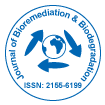开放获取期刊获得更多读者和引用
700 种期刊 和 15,000,000 名读者 每份期刊 获得 25,000 多名读者
索引于
- CAS 来源索引 (CASSI)
- 哥白尼索引
- 谷歌学术
- 夏尔巴·罗密欧
- 打开 J 门
- Genamics 期刊搜索
- 学术钥匙
- 期刊目录
- 研究圣经
- 中国知网(CNKI)
- 乌尔里希的期刊目录
- 访问全球在线农业研究 (AGORA)
- 参考搜索
- 哈姆达大学
- 亚利桑那州EBSCO
- OCLC-世界猫
- SWB 在线目录
- 普布隆斯
- 日内瓦医学教育与研究基金会
- 米亚尔
- ICMJE
有用的链接
开放获取期刊
分享此页面
抽象的
Gold Bio-recovery from Electronic Waste Using Aspergillus niger: A Case Study
Nivedita M
Introduction: Recycling electronic waste with microorganisms is more sustainable than conventional methodologies. The usage of fungi like Aspergillus niger is comparatively sustainable for metal recovery.
Case Presentation: Aspergillus niger can be utilized for the bio-recovery of gold from electronic wastes. The study compared the efficacies of Aspergillus niger strain MXPE6 against a collection of its strains. Bioleaching was performed on printed circuit boards (PCBs) of mobile phones. The fungal consortium of strains containing MXPE6 and MX7 was found to be comparatively advantageous.
Analysis and Discussion: Aspergillus niger is highly effective at bioleaching gold. Various parameters related to fungal growth were different in the presence of PCBs. However, PCB does not interfere with fungal growth.
Conclusion: Using filamentous fungi has the potential to be efficient for metal recycling.

 English
English  Spanish
Spanish  Russian
Russian  German
German  French
French  Japanese
Japanese  Portuguese
Portuguese  Hindi
Hindi